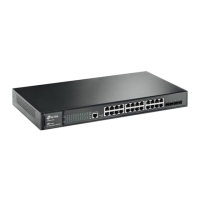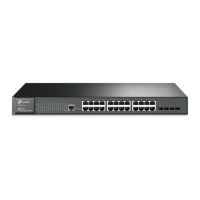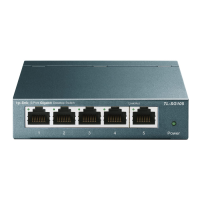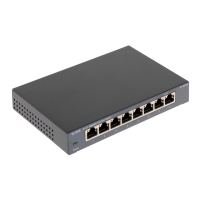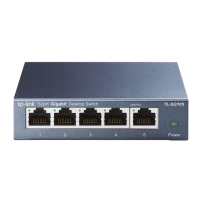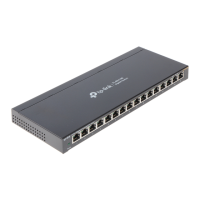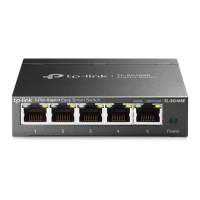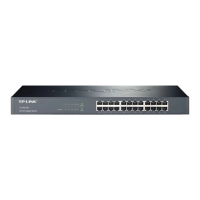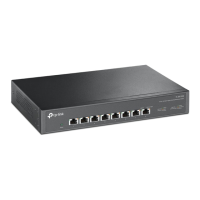27.4 loopback-detection(interface)
Description
The loopback-detection command is used to enable the loopback detection
function of the specified port. To disable it, please use no
loopback-detection command.
Syntax
loopback-detection
no loopback-detection
Command Mode
Interface Configuration Mode (interface gigabitEthernet / interface range
gigabitEthernet)
Privilege Requirement
Only Admin, Operator and Power User level users have access to these
commands.
Example
Enable the loopback detection function of ports 1-3:
T2500G-10TS(config)# interface range gigabitEthernet 1/0/1-3
T2500G-10TS(Config-if-range)# loopback-detection
27.5 loopback-detection config
Description
The loopback-detection config command is used to configure the
process-mode and recovery-mode for the ports by which the switch copes
with the detected loops.
Syntax
loopback-detection config process-mode { alert | port-based | vlan-based }
recovery-mode { auto | manual }
Parameter
process-mode —— The mode how the switch processes the detected loops.
alert
:
When a loop is detected, the switch will send a trap message and
generate an entry on the log file. It is the default setting
.
port-based
:
When a loop is detected, the switch will send a trap message and
generate an entry on the log file. In addition, the switch will block the port on
which the loop is detected and no packets can pass through the port.
204
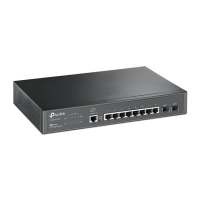
